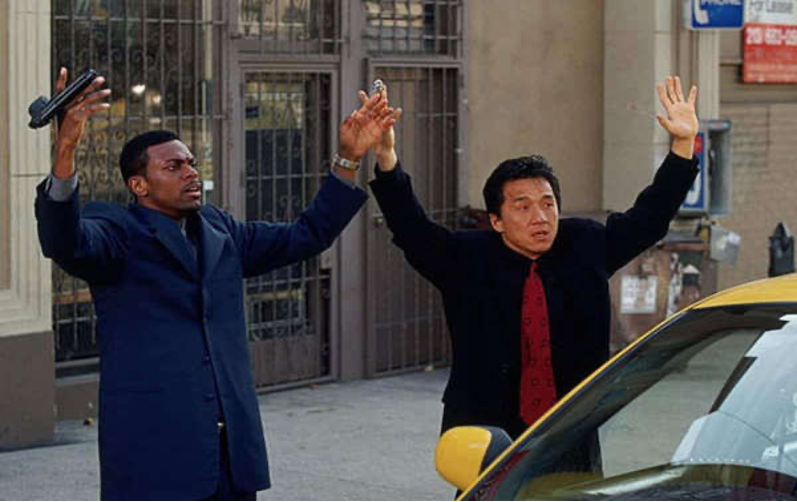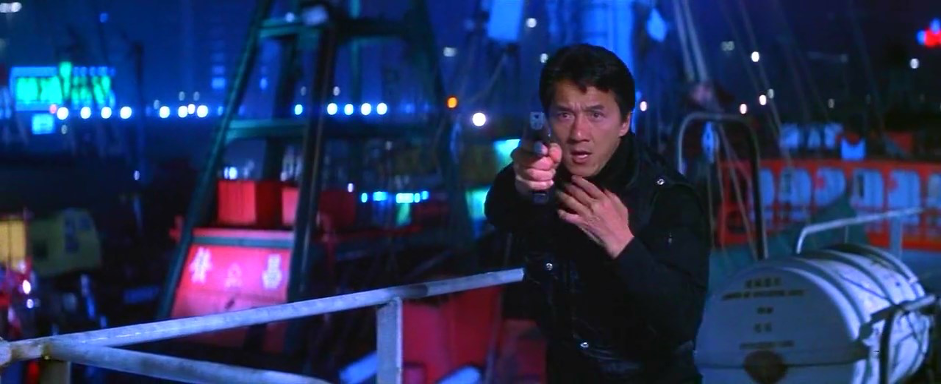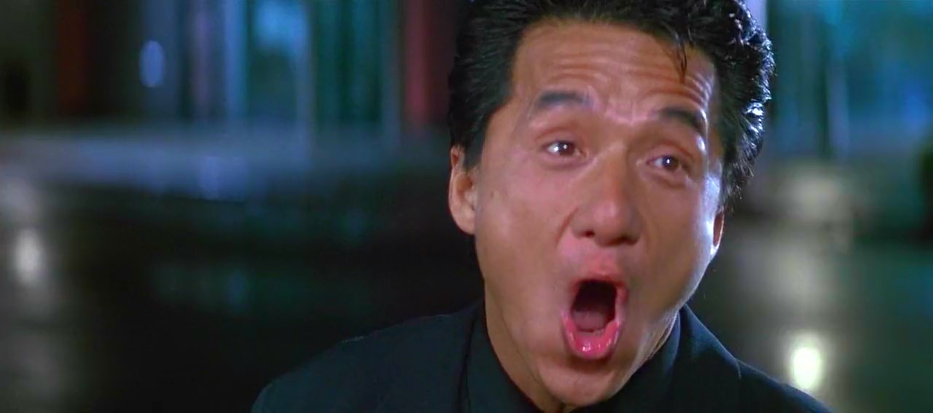Introduction
Agamben articulates that “cinema is not image but gesture”; thus, gestural cinema goes beyond aesthetics and into political and ethical realms (Agamben, 1993). Thus, the loss of gestures amongst the Western bourgeoisie is first highlighted to conjure the loss of gestures in society, which was implicated by Tourette’s syndrome. The loss of control of one’s gestures posited by Tourette’s syndrome is what invokes the need for gestural cinema, aiming to recover or record the lost gestures (Agamben, 1993). Thus, gesture in the realm of action is separate from acting and doing. Attunement is described by Turnbull & Searle (2022) as the emotional connection with other individuals and forms the basis of relationship formation. Consecutively, Doane (2003) observed existential resistance between surface and depth and exteriority and interiority, where the close-up view of gestures acts as the passage into a person’s emotions. The close-up view of gestures invokes new deeper perspectives attributed to the hystericization of the film theory (Doane, 2003). Lastly, Spadoni (2020) articulates that atmosphere is depicted by the intuitive experience created by the scene’s ambiance in that it aims to conjure a specific feeling rather than convey a particular message. Therefore, the combination of gestures and attunements may help outline the prevailing atmosphere of the film. Thus, the essay aims to analyze various film images on how they outline gestures, attunements, and atmosphere.
Gestures
Agamben explicates gestures as specific types of actions that mainly offer support and endurance to the main action; thus, it is neither about acting nor producing an action (Agamben, 1993). Additionally, Agamben maintains that gestures are an important aspect of cinema where, with dance as an example, it is illustrated not to be solely about the movement that has an end but a movement for its interest and dance as an aesthetic (Agamben, 1993). Thus, the author highlights that the dance acts as a medium of expressing the gesture where it presents a political or ethical dimension to the audience, putting them in a medium or realm of mediality. Therefore, this informs Agamben’s perception that gesture is the most important aspect of cinema. Moreover, the dynamic nature of images is perpetuated by the cinema, which Deleuze, on the one hand, defines as moving images (or film). On the other hand, Agamben perceives cinematic images in the sense of gestures, where a breakdown of the film yields a collection of gestures rather than images (Agamben, 1993). A key attribute of an image articulated by Agamben is that it has contrasting features; that is, it considers and kills the concept of gesture and fixates it into a static image. Secondly, the cinematic image preserves the dynamicity of the gesture, connecting the various aspect of the dynamicity to a whole, thus the need to isolate the image’s dynamicity from its staticity.
For instance, the following image is extracted from Rush Hour, presenting the gestural cinematic concept.

From the image, the dynamicity of the “surrendering” gesture is evident where it reifies the gesture on the one hand. In contrast, the staticity of the image wipes out the gesture on the other hand. The image illustrates the gesture’s significance, leading the audience into the ethical and political realms rather than aesthetics. Agamben (1993) postulates that supposing a film is attributed by being gestural cinematic drives the audience into ethics and politics, not aesthetics. Considering Guy Debord’s cinematic work, Agamben explicates Debord’s work in terms of the gestural aspects of the image and how this procedure derives ethics and politics in the film. The image above raises the concept of ethics whereby the “surrendering” gesture is mainly used when a more powerful adversary threatens to attack an individual, thus, eliciting danger. The unethical act of threatening an attack from the attacker leads to lifting the hands to support the gesture. It opens a door into the audience’s attunements, where adherence to the “bad guy’s” request by the two characters implies that the gesture is a medium at which the audience is in ethical and political dimensions and establishes attunement.
In addition, the gesture illustrates the political concept of insecurity and gun ownership in the US. In comparison, Debord’s cinematic concept of repetition and stoppage of an image enables the freeing of fixed gestures, a concept Agamben refers to as the creation and dismantling of an image to expose the gesture (Agamben, 1993). Agamben posits that the medium is always secondary to expression, provided the image is rightly illustrated. In addition, repetition and stoppage concepts help uncover the medium, thus interrupting the expression process in that the image is seen as the medium instead of disappearing into what makes it overt (Agamben, 1993). Consequently, the image is deemed imageless as it no longer presents an image of anything. For instance, in pornography or advertising, the image is represented as wanting, thus leading the viewers to more images promising to satisfy the desire that the initial image in its current status cannot. Comparatively, as outlined by Agamben, Debord’s way presents an image to bring out the sense of “imagelessness” without availing of other images, thus the end of the image. The comparative variation between these two processes conjures cinematic ethics and politics.
Sinnerbrink (2015) supports Agamben’s film philosophy, where a film presents both ethical and political realms, not just aesthetics. Furthermore, gestural cinematics goes beyond being a medium for capturing audio-visual moving images but appraising the non-linguistic, material aspect of human action that is incapable of being dismantled into our purposeful aims or efforts at defining language, namely, gesture (Sinnerbrink, 2015). Therefore, the gestures in the image above from the Rush Hour film collaborate with ethics and politics to facilitate the audience’s understanding of the medium’s philosophical aspect and cultural-historical importance. Consequently, it enkindles ethical and political reflection of gun ownership in the US, given its explicit implications in the gesture.
Attunements
Turnbull & Searle (2022) account attunement as cinematic affordance, which forms the basis of relationship formation, emotional connections, and attuning into the characters’ lives. In Rush Hour, the audience is attuned first to Inspector Lee’s police work, crime-fighting skills, and the strife involved in the process, as indicated below.

Additionally, his crime-fighting skills are needed in America in solving a kidnap case. After landing, he gets attuned to an American perspective of crime fighting by Detective James Carter. The film facilitates the audience to make the emotional transition where Inspector Lee is depicted as skillful in Hong Kong but faces teething challenges in America that he has to overcome eventually. Shortly after arriving in America, the scene about the nonspeaking Inspector Lee invites the audience to attune to the language barrier and discrimination non-Americans face after arriving in the United States. Furthermore, Detective Carter’s dismay gesture about Inspector Lee’s capacity to suddenly speak English exemplifies the common perception “Americans” have over “non-American immigrants” regarding speaking English, thus helping the audience attune to the numerous challenges faced by immigrants in America. Also, the development of tremendous friendship between the two protagonists helps the audience attune to their relationship, which leads to a strong emotional connection between the audience and the characters. Close-ups are commonly used to show the development of their friendship; for instance, Lee’s training to say the word “Y’all” capitalizes on close-up shots, which depict Lee’s determination to pronounce the word properly, which ends up being very funny. Consequently, this helps the audience attune to the challenges of non-Americans switching to an American accent, thus forming an emotional understanding of the strife.
Doane (2003) makes the implicit connection between gestures and close-up whereby close-ups depict the advantaged site where gestures are experienced. Similar to Agamben’s (1993) gestural cinematic, Photogenic accounts for what is unjoined and inexplicable as it goes beyond words, thus attributing to cinematic specificity. In addition, Photogenic was characterized by disentanglement with ethics, hence cinematic gestures. Doane (2003) adds that the use of close-ups adds intensity to the film as it addresses the audience directly, thus creating a hypnotic feeling that improves the attunement. In comparison, the film Rush Hour’s use of close-up between Lee and Carter and the intensity and humor in the character’s facial expression in trying to say “Y’all” directly address the audience as indicated below.

The emotional excitation that the characters stir among the audience help form the basis of attunement and the formation of emotional connection that help understand the characters better. Epstein & Liebman (1977) denote that close-ups epitomize the emotional expression of the characters, such as anger, pain, love, sadness, horror, fidgeting, and others; thus, they define the character. Also, close-ups are illustrated to define the universal language of cinema, and the most difficult to define is the contrary. In the film Rush Hour, close-ups are also used to indicate characters’ attunement to one another through the expression of certain gestures. In the first image, the close-up of both Lee and Carter portrays a contrasting expression of emotions upon being pointed at a gun, whereby Lee expresses fear while Carter expresses disgust. According to Doane (2003), the use of close-up creates more fervidness, where a close-up shot of a cockroach will look more impressive than a hundred elephants in a medium and long shot. Therefore, Lee’s expression of fear compared to Carter’s illustration of disgust help effectively shape the attunement of the two protagonists towards American crime. The fact that Carter is well aware of gun possession in America compared to Lee helps differentiate their gestures.
Concerning the cultivation of emotional closeness, close-ups are attributed to establishing both spatial and human closeness (Doane, 2003). Also, close-ups serve as the vehicle of the presence of gestures in the cinematic image. As the face is indicated to be the body part that cannot look at itself unless in a mirror, thus a virtual face; provides the avenue to understanding the other person by reading it. Therefore, a close-up of the face illustrates humans individuality, which helps form a specific emotional connection to another person. Moreover, the close-up of faces is juxtaposed with the audience’s insensitivity. The film uses close-ups in moments targeting to highlight the small details aiming to crack the audience’s insensitivity (Doane, 2003). For instance, in image 3, the film aims to highlight the little details in Lee’s face that target to incite an emotional touch of humor or laughter among the audience. In culmination, the use of close-up to highlight the little facial details that comprise gestures helps create an emotional stir of the cinematic images among the audience that helps establish attunement in the film.
Atmospheres
Spadoni (2020) denotes that the film’s atmosphere is perpetuated by the relationship that lies between emotions and space whereby, a particular mental or affectional tone pervading through the environment creates a space of moods or an atmospheric space as the atmosphere also permeates through the audience through the formation of mood. Moreover, the author articulates that the emotional elicitation of an atmosphere is short-lived and subjective since it is based on a subject and prone to changes over time. The atmosphere is stipulated as the ‘sieve’ used by the analytical eye to separate the various elements such as colors, shapes, objects, and others. It is considered stage sets that attribute a theatrical set and architectural structures (Böhme & Le Calvé, 2018). Regarding the creation of a cinematic atmosphere, there is no definitive way. However, several attributes can be used to draw similar features from various films that illustrate the formation of a filmic atmosphere.
For instance, certain soundtracks may be used to tailor a specific atmosphere depending on the scene. Also, various visual effects or color grading can create specific atmospheres, such as memories or illustrating traditional processes (Spadoni, 2020). The first image analyzed in the essay presents a violent atmosphere based on the theatrical set comprising guns and surrendering gestures. Also, it creates an atmosphere that the scene takes place at the roadside as the sound of moving vehicles makes up the background sound. Regarding the experience of the cinematic atmospheres by the audience, Böhme & Le Calvé (2018) observed that numerous atmospheres are presented to the audience and characterize the cinematic experience. Additionally, they are created by the perceptual surfaces experienced as part of the action and can be heard by the film’s characters when watching and listening. Therefore, the dialog exchanged among the film characters, the sound they can hear, and any element making up a set make up the film’s atmosphere.
As mentioned earlier, the close-ups define the character, while the filmic atmosphere, as Spadoni (2020) stipulates, is complemented by these close-ups. Thus, the close-ups used in the film help define the atmosphere of the film, whereby the close-up of image three helps define a humorous atmosphere as Lee practices the pronunciation of “Y’all.” Furthermore, the close-up in image 2 defines an atmosphere of violence characterized by using a gun to apprehend criminals, Inspector Lee. According to Spadoni (2020), lighting is atmospheric and forms a key element of mise en scene. In image 2, blue lighting in the background and the shadows are used to create a menacing atmosphere of the night when Inspector Lee arrests the criminals. In image 3, lighting is used to highlight Lee’s face while the shadow effect fills the background to create an uncanny atmosphere that helps the audience concentrate on Lee’s facial expression and gestures.
Comparatively, setting, a feature of mise en scene, is linked with establishing cinematic atmosphere, for example, campfires or shooting in a background covered with a full moon to express a romantic atmosphere (Spadoni, 2020) properly. In image 1, the setting is the side of the street, which illustrates the intensity of the crime rate in America, thus improving the law-breaking atmosphere. Also, image 2’s setting of a harbor properly defines the law-breaking and criminal apprehension atmosphere by showing the intensity of Inspector Lee in his job and the extent criminals go to break the law. Therefore, the settings help develop the atmosphere of the two cinematic scenes so that audience can deduce. Spadoni (2020) points out that the feature that accounts for the setting’s ability to create an atmosphere is its development of cinematic space and atmosphere. Moreover, the author denotes a difference between atmosphere and mood, although, in many instances, they are used interchangeably. Consequently, the article surmises that space should be used to create a cinematic atmosphere rather than adding mood, as space allows the focus on the formal facet of the work. Therefore, the natural attribute of a film occupying space renders the setting and everything encompassed by it including lighting and props, to be key to analyzing cinematic atmosphere.
Conclusion
The cinematic experience is defined by cinematic gestures, attunement, and atmosphere where the use of gestures helps develop filmic attunement and atmosphere. Gestures are attributed to going further than the act itself into political and ethical realms and as the material aspect of human action that cannot be dismantled into our purposeful aims or efforts at defining language. The close-up filming of the gestures helps develop the emotional connection in the film as it seems as if the characters address directly to the audience, consequently establishing attunement. Also, attunement helps make sense of the integrated gestures and define the atmosphere. Besides gestures, mise en scene elements such as lighting, sound, and setting help to create a cinematic atmosphere that is different from the mood. The spatiality of the atmosphere rather than the addition of mood helps properly define the atmosphere as it presents the various features of settings like props and lighting that help the audience develop the correct atmosphere of a cinematic scene. Therefore, the interconnection among gestures, attunement, and atmosphere helps the audience establish and develop an intimate cinematic experience.
References
Agamben, G. (1993). Infancy and history: The destruction of experience. Verso.
Böhme, G., & Le Calvé, M. (2018). Atmosphere, the foundation of a new aesthetic. Communications, (1), 25-49.
Doane, M. A. (2003). The close-up: scale and detail in the cinema. Differences: A Journal of Feminist Cultural Studies, 14(3), 89–111.
Epstein, J., & Liebman, S. (1977). Magnification and other writings. October 9-25.
Sinnerbrink, R. (2015). Cinematic Ethics: Exploring ethical experience through film. Routledge.
Spadoni, R. (2020). What is film atmosphere? Quarterly Review of Film and Video, 37(1), 48–75.
Turnbull, J., & Searle, A. (2022). Filmmaking practice and animals’ geographies: attunement, perspective, narration. cultural geographies, 29(3), 453-464.
 write
write